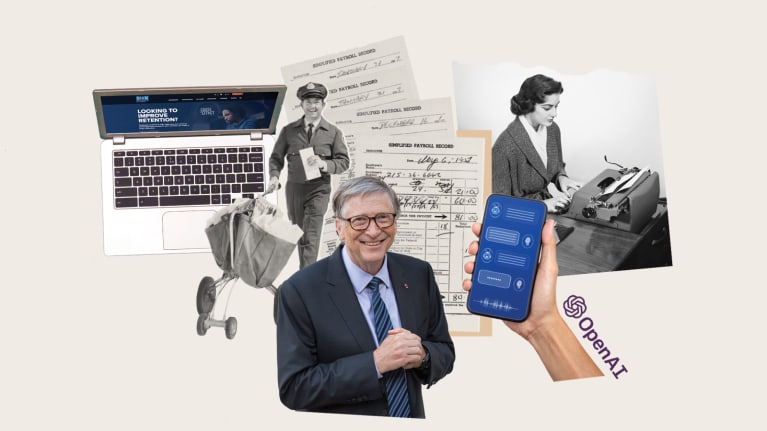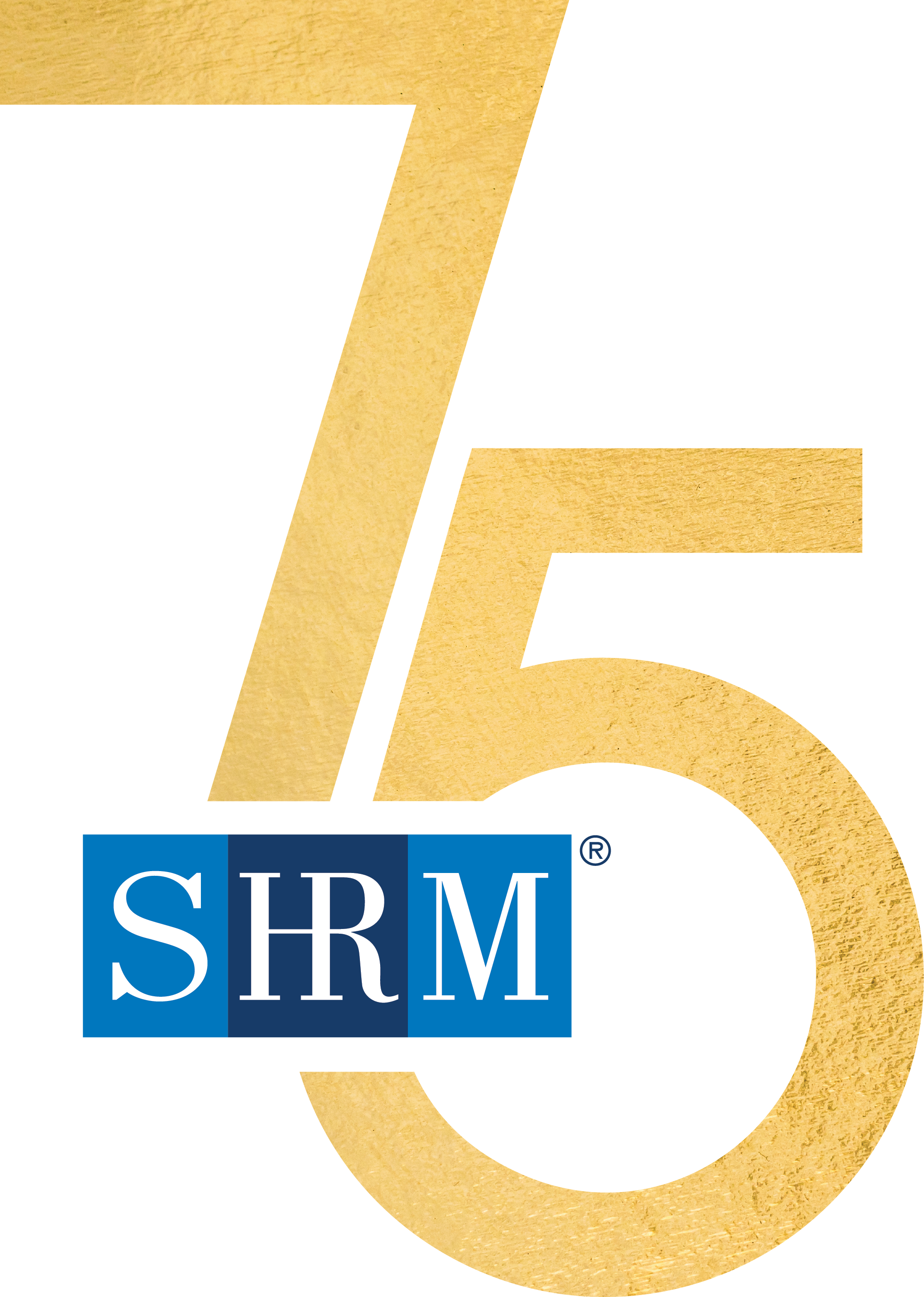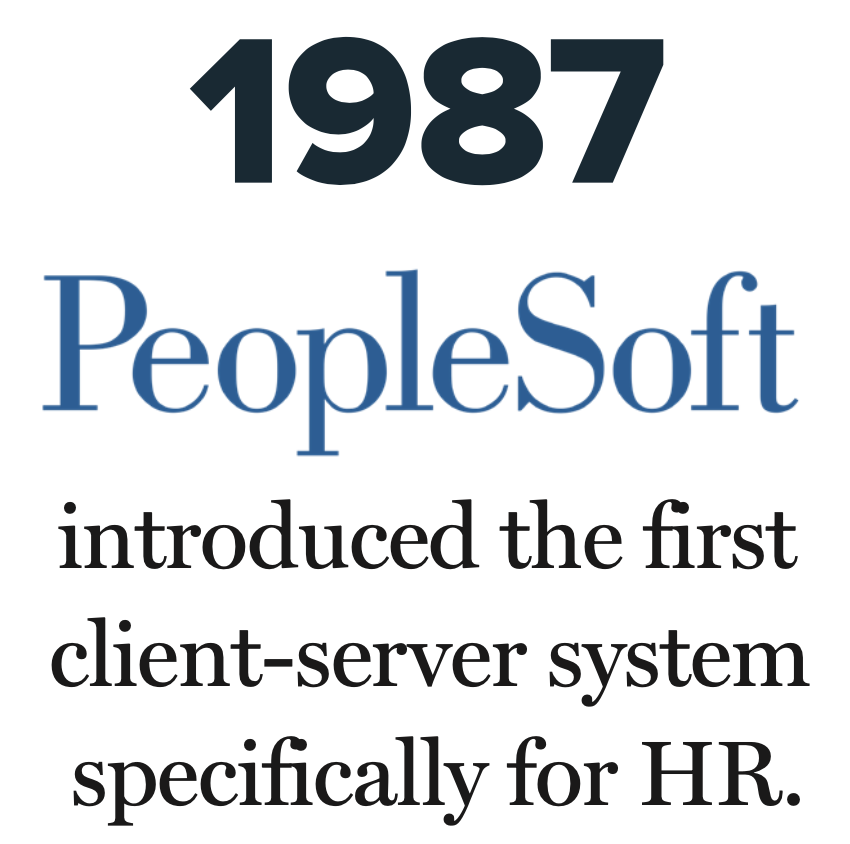

Describe today’s HR technology to HR professionals who were working in 1948 and they would likely accuse you of promoting a science fiction fantasy.
The daily reality for HR practitioners in post-World War II America meant dealing with a paper blizzard of record-keeping forms, posting job ads in local newspapers, and having to send important documents to other offices for signature through couriers or the U.S. Postal Service. Fax machines, e-mail and the Internet were still decades away.
Today, chatbots regularly screen job candidates and answer employees’ frequently asked questions, cloud-based HR technology platforms efficiently house vast amounts of digitized employee data, self-service tools allow employees to confirm the accuracy of their own paychecks or swap work shifts with co-workers, and artificial intelligence combs through employee survey data to identify issues driving low engagement or excessive turnover.
Such technological advances have helped transform HR’s role from one that was mostly transactional to one that is now more strategic at many organizations.
Milestone Moment
Josh Bersin has had a ringside seat for the evolution of HR technology. A longtime HR industry analyst, he began his career working with mainframe computers at IBM in the 1980s. In the decades since then, he has chronicled the transformation of HR technology as the head of his own global consulting and research companies. He is currently CEO of the Josh Bersin Co. in Oakland, Calif.
The first computer technologies arrived on the scene as what were then known as personnel departments experienced growing demands for employee record keeping and compliance reporting following World War II.
“Those first HR technologies were just simple record-keeping and payroll systems that ran on tabulating machines,” Bersin says. The use of mainframe computers represented progress because it meant paper forms could now be stored electronically in central data repositories; as a result, tasks such as processing payroll became more efficient.
But it wasn’t until a few decades later that the foundation of modern-day HR technology was born.

‘Those first HR technologies were just simple record-keeping and payroll systems that ran on tabulating machines.’
JOSH BERSIN
“The first real transformational change came when PeopleSoft introduced the first client-server system specifically for HR in 1987,” Bersin says.
The PeopleSoft platform was a breakthrough because it enabled HR to distribute computing power across a vast number of smaller, more inexpensive computers. It wasn’t long before other vendors, such as SAP and Oracle, followed suit with their own client-server systems.
Ron Hanscome, a research vice president specializing in HR technology transformation for Gartner, says the next big milestone came when vendors introduced specialized platforms to manage and automate tasks in recruiting, learning and performance management.
“These were areas that weren’t handled well by the core HCM [human capital management] technology platforms of the time,” says Hanscome, an HR technology industry analyst who has tracked developments in the field since 1984.
These “point” solutions, which were tailored to a specific function, were soon followed by another landmark technology development: cloud technology and software-as-a-service platforms. The cloud meant organizations that had long used onsite software installed on company computers could now access and use HR data hosted externally on third-party platforms. One of the main benefits of the cloud is that responsibility for software maintenance and support moved to vendors. In addition, the cloud allows for greater ease in scaling software to changing business size and in quickly updating software with new functionality.
As the cloud made inroads, HR leaders also started to adopt a new, one-stop-shopping breed of technology known as the HCM suite. These systems consolidate under one vendor umbrella not just core record-keeping, payroll and benefits administration functions, but also point systems, or “modules,” such as learning, recruiting, onboarding, performance management and recognition.
Over the past decade, industry vendors have also unveiled new mobile-based HR applications and self-service tools with the goal of making access to HR data and processes more convenient and efficient for employees. These innovations are of particular benefit to the large “deskless” component of the workforce that relies primarily on phones, rather than computers, for workplace-related communications.
Recruiting and Learning
Large specialized platforms, such as applicant tracking systems (ATSs) for recruiting, and learning management systems (LMSs) for learning initiatives, also have undergone their own transformations over the decades.
The introduction of the ATS revolutionized talent acquisition by creating a system that could automatically process and store candidate resumes.
“The market for the ATS became red-hot in the 1980s because of the war for talent and the growing need for a system of record dedicated to recruiting,” Bersin says.
Early ATS platforms focused more on resume tracking and compliance issues than ease of use. Later, vendors introduced new capabilities, such as automatically posting open roles to job boards and social media sites as well as communicating directly with candidates via text. More recently, groundbreaking AI tools have created new efficiencies in how candidates are screened, interviewed and onboarded.
Learning functions have moved from depending solely on the venerable LMS, designed primarily for administrative and compliance reporting purposes, to more user-friendly platforms that can deliver personalized digital learning to employees as part of their workflow. Next-generation learning experience platforms, for example, give organizations access to a broader selection of learning content on the market and empower employees to take charge of their own learning and career development through self-service tools.
Going Forward
In 2023, the HR technology market is characterized by a focus on improving the employee experience and on using AI in new, ethical ways to create greater efficiencies across a breadth of technology categories.
Simply put, the focus on employee experience translates to creating more easy-to-use, unified tools that can enhance workers’ productivity and reduce frustrations that come with using poorly designed technology.
“Companies invested in HCM suites thinking their consolidated nature would solve all of their employee experience problems, but it’s not that easy,” Hanscome says. “Creating a cohesive, user-friendly experience often requires using tools like overlays on top of such suites.”
Overlay technologies, called “journeys” by some vendors, serve to unify the specialized point solutions and apps in suites to create a common user experience.
On the AI front, algorithms are increasingly being used to support hiring and promotion decisions, to match interested employees to internal job openings in popular “talent marketplaces,” and to alleviate HR’s growing workload through use of chatbots that answer common employee questions.
Stacia Garr, co-founder and principal analyst of RedThread Research, a human capital research and advisory membership organization based in Woodside, Calif., believes one of the most important uses of AI today is occurring in people analytics software.
“HR is using increasingly sophisticated algorithms to better understand and uncover what’s happening with the workforce, particularly from an engagement and employee experience perspective,” says Garr, a longtime follower of the HR technology industry.

‘We’ve seen some backlash against how AI is used for employment decisions through recent legislation in the United States.’
RON HANSCOME
The growing adoption of AI also has attracted more scrutiny from industry regulators and legislators, Hanscome says.
“We’ve seen some backlash against how AI is used for employment decisions through recent legislation in the United States,” he says. “As a result, the movement today is toward increased transparency about how AI works and is applied in making hiring or promotion decisions.”
Bersin believes the transformation of HR technology is nothing short of remarkable, outpacing innovation in other disciplines such as marketing, sales and finance in recent years.
“HR technology has become increasingly sophisticated and intelligent,” Bersin says. “Today, you see some of the most innovative technologists in the world wanting to work in HR technology, not in other fields, and every major venture capital firm now has an HR tech partner or two as they continue to invest more in the space. It’s been quite a journey over those 75 years.”
Dave Zielinski is a freelance business journalist in Minneapolis.
Illustration by Valerie Chiang.

